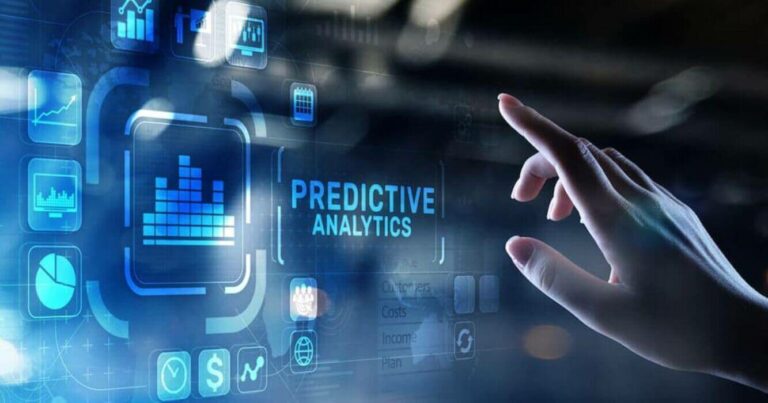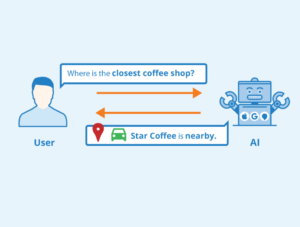Predictive Analytics: What is it and how it works

Predictive analytics is a branch of data science that uses various methods to analyze data from a business, in order to find patterns or trends that will help that business to make the right decisions.
There are many activities involved in this process and they include disciplines like machine learning, data analysis, and artificial intelligence algorithms that help to make those predictions.
You can use predictive analytics in a wide range of applications. All you need is access to historical data that you can use to train your system, plus current data to make the predictions on.
This blog looks at all the different benefits of using predictive analytics in your business, and additionally shows you how to get started.
How Predictive Analytics Works
Predictive analytics is one part of the different areas of data analytics. The other ones are descriptive analytics, diagnostic analytics, and prescriptive analytics.
As their different names also suggest, descriptive analytics is the area that describes anything that happened in a situation, while diagnostic analytics tries to find out why that thing happened. Predictive analytics, on the other hand, focuses on finding things that may happen in the future, while the fourth one, prescriptive analytics, looks for ways you can make specific things happen.
Now, let us look at the ways that predictive analytics uses to discover what might happen in the future. I will list them in steps are as follows.
Step 1: Objective Definition
First, you need to define what you are trying to achieve and you do that by specifying your objectives for the predictive analysis and the target variables that you are trying to predict. These targets could be sales, new customer acquisitions, equipment maintenance, and so on.
Step 2: Data Collection
Next, you need to collect historical data that you can employ in training your predictive model. The dataset should be as comprehensive as possible, with all the relevant information and target variables.
Step 3: Data Pre-processing & Feature Selection
You always have to prepare your data before training a model by removing outliers and ensuring that all variables are on a comparable scale. Then to simplify your work and improve accuracy, you need to select the variables or features that are most important to achieve the results that you need.
Step 4: Model Selection
Different machine learning models work well for different tasks. So, you will also need to select the type of predictive model that you will be working with. Examples include neural networks, linear regression, decision trees, and more.
Step 5: Model Training & Fine-tuning
The training phase is simply feeding the model the raw data and teaching it which outputs are desirable and which are not. The more data you feed a model, the better its predictions will be. You can then test the model to validate its performance and fine-tune parameters where necessary.
Step 6: Making Predictions & Deployment
Once you are satisfied with its performance, then you can employ the model to make predictions on new data. You may also need to deploy the model in a specific environment or integrate it with other applications and systems.
Benefits of Predictive Analytics
There are many benefits to having a predictive analytic AI model at your disposal, although this depends on the work you intend to do and on how well the model has been trained. Here are some of the major benefits of using predictive analytics.
- Assess & Mitigate Risk: The ability to analyze historical data makes it easier for predictive analytics models to identify patterns that indicate threats, risky behavior, or potential harm to a company. These can include identifying fraudulent behavior, credit risk, and other anomalies that would otherwise cost the business some money.
- Forecast Future Trends: The same patterns can also help to identify market trends and related customer behavior. Companies can leverage this information to gain a competitive advantage, make more money, and get better customer engagement.
- Improve Decision Masking: Predictive analytics also provides managers with an important decision-making tool. The ability to identify relationships, trends, and patterns in current and historical data, enables any business leader to make solid data-driven decisions through deeper insights of the future.
- Boost Efficiency: Some businesses can employ predictive analytics to forecast customer demand and thus, be ready to meet demand by boosting production or inventory levels. Factories can also employ predictive maintenance to cut down on machine breakdowns and save costs.
- Competitive Advantage: Most businesses depend on information, and having the right insights about a situation or event can give even small companies a competitive advantage over larger ones.
- Boost Revenue: By having a competitive advantage, optimizing operations and customer engagement, or by being able to optimize resource allocation, a company can boost overall revenues and profits.
Model Types & Techniques
There are different types of machine learning models that you can use to build a predictive analytics application. Each type has its pros and cons, so your best choice will depend on the work that you have at hand and the type of results that you are trying to achieve.
Following are the major model types that you can use in building your application.
- Decision Tree Models: They use nodes that represent branches in decision-making, much like how humans reason. They are often used in information classification, such as is this a bird or a dog?, is this project low risk or high risk?, and so on .
- Neural Networks: A neural network is another type of machine learning system modeled after the human brain. They work with layers called neurons that enable them to learn the relationships between different types of data input and what they mean. An example is large language models and handwriting recognition systems. Neural networks are ideal for complex projects.
- Time Series: Events that happen over time, such as stock or Forex prices, are best handled with time series analysis. A time series is a chronological succession of data that are indexed over pre-determined time intervals. This model is good for finance, engineering, pattern recognition, weather forecasting, and more.
- Regression Analysis Models: Regression analysis is a statistical method used to estimate the relationship between two variables. If one of the variables depends on another, such as a child’s height depends on its age, or a person’s weight depends on how much food he eats daily, then regression analysis can be used to predict the value of one variable, e.g weight, based on the other e.g height.
- Clustering Models: Clustering is a data-grouping technique that uses similar qualities between objects to group them into clusters. A similar quality can be anything from color, shape, height, income level, and so on. Clustering works well for customer segmentation, recommendation engines, pattern recognition, and more.
Predictive Analytics Applications Across Industries
Different people are already using predictive analytics to achieve forecasts and other predictive results across different industries. The following industries are some of the heaviest users of the technology.
- Finance: Financial industry businesses leverage predictive analytics for so many activities, including fraud detection and prevention, risk assessment, customer segmentation, revenue growth, employee satisfaction, and many more.
- Manufacturing & Supply Chain: Manufacturers use predictive analytics for inventory management, sales and marketing of their products, workforce optimization to align with production schedules, optimization of raw material procurement, and predictive maintenance to avoid machine breakdowns and reduce downtime.
- Retail: Predictive analytics also finds utilization in the retail industry in ways like demand forecasting, marketing campaigns, and in predicting revenues.
- Sports: Teams and their managers can discover lots of valuable insights by utilizing predictive analytics on their players, coaches, and their historical performances. This can lead to better game strategies, improved team performance, and better injury prevention.
- Maintenance Forecasting: Lots of companies rely on various machines for productivity and when these machines break down, they lose money. Predictive analytics can solve this problem using sensors and the right software to monitor and analyze these machines, so it’s easy to spot impending breakdowns.
- Operations Optimization: If your business runs operations that produce lots of data trails, then predictive analytics might be an ideal tool to help you discover ways to optimize your operations. This optimizations can range from outreach marketing to saving operation costs, and maximizing revenue with the right pricing.
- Weather Forecasting: Weather forecasters also apply predictive analytics for accuracy. They combine and feed data from satellites, weather stations, and various sensors into an AI model, which provides the predictions.
- Video Games: The applications of predictive analytics in the gaming industry are also many. They help to improve player engagement by predicting what individual players will like. They also help in maximizing in-game purchases, which can boost revenues when done right.
Challenges Of Predictive Analytics
While predictive analytics can produce valuable insights, it also comes with its own challenges, which can make it more difficult to implement. Following are some of these common implementation challenges of predictive analytics.
- Complexity: Predictive analytics is not a very simple subject, so it might not be for everyone. This means that each team or business should have someone with the essential skills dedicated to analytics.
- Data Quality: A predictive model is only as good as the data it is trained on. So, no matter the type of machine learning approach and algorithms you use, you will get poor results if you train your system on poor data. The solution, of course, is to work with high-quality data, both in training the model and in making predictions.
- Adoption: Some people simply distrust machines or the use of AI tools because they do not buy the whole artificial intelligence idea. Overcoming such adoption challenges requires time and education about the pros and cons of working with AI tools.
Top Predictive Analytics Tools
There are many tools out there that can help you with predictive analytics, each with different approaches. Here are some of the most popular ones:
- KNIME: Free & open-source analytics platform.
- RapidMiner: Data mining and machine learning platform.
- SAP Analytics: Cloud-based data analysis platform.
- Weka: Data platform for cloud and AI.
- DataRobot: Platform for fast application implementations.
- Google Cloud AutoML: Beginner-friendly enterprise-grade machine learning.
- SAS: Analytics solutions for various industries.
- Databricks: Generative AI-powered data intelligence application.
- H2O.ai: Generative & predictive cloud AI platform.
- Alteryx: Easy-to-use data analysis tool
Conclusion
Rounding off this blog post about predictive analytics and its many benefits for organizations from manufacturing to marketing and finance, you have seen the different creative ways that companies are employing this technology.
You will also realize that you too can harness the power of predictive analytics through data, machine learning, and statistical algorithms to generate valuable insights and forecasts for your business.





